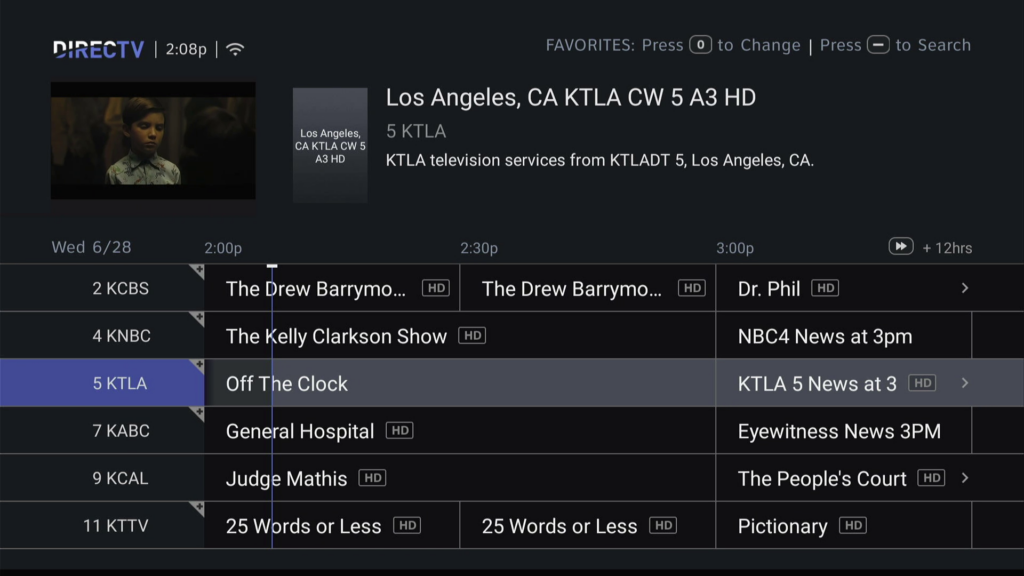OK folks, cards on the table. I’m writing this article in the summer of 2023 when there isn’t a lot of new live TV. There’s a writers’ strike on, and that’s not making things any better. So, I find myself flipping through my DIRECTV guide a lot hoping that something will jump out at me.One thing did, although it’s probably not the thing that the content providers wanted.
A3

If you highlight the name of a channel in the guide, you’ll see some of the channels have a mysterious “A3” designation. Try it yourself. Highlight the call letters of your local channel and look at the description at the top of the guide, you might see it. I know our Southern California friends have several channels listed that way, and it’s been like that for years.
It turns out there’s nothing nefarious about the designation. It’s mostly an internal code, and I’ll honestly say I’m surprised it even made it to the public facing guide.
A3 is another way of describing DIRECTV’s proprietary MPEG-4 encoding format. It means, in their words,
A3 is an acronym for three “Advanced” categories of …
1) “Advanced coding”
2) “Advanced compression”
3) “Advanced modulation”
Advanced?
Now, MPEG-4 may not seem all that “Advanced” here in 2023. It didn’t even seem terribly advanced in 2023. But, think back 15 years or so. It was pretty impressive. Blu-ray Disc players, which were state of the art for HDTV back then, used MPEG-4 encoding. DIRECTV was putting this tech to use for pay TV, encoding on the fly. That took computers with a lot of horsepower back then. DIRECTV has refined their coding technology to offer the best possible picture quality over the years, and they manage to do it with about a third of the bandwidth of the original broadcast signal.
Will DIRECTV abandon MPEG-4?
DIRECTV uses MPEG-4 for its programming over satellite and it probably will for another decade at least. Apparently according to those folks at Satellite Guys, they use the H.265 codec for their 4K programs. It allows for higher quality at lower bitrates. However, implementing a new coding scheme would mean replacing all the receivers currently out there, with the possible exception of 4K Genie Clients and Geminis. Keep in mind that DIRECTV still supplies most of its programming in SD MPEG-2 as well as HD MPEG-4, to accommodate folks who just can’t give up their old receivers. Taking a step beyond that to a different codec would take quite a long time and cost quite a bit of money.
On the streaming side, it’s a little harder to see what’s really going on. I know that there was a push at DIRECTV several years back to move toward a single compatible format for all programming, whether it was delivered via satellite or internet. That push resulted in big changes behind the scenes, but clearly there are still different formats being used. I would guess that streaming content from DIRECTV uses a little more modern codec just to save bandwidth, but of course I could be wrong.




